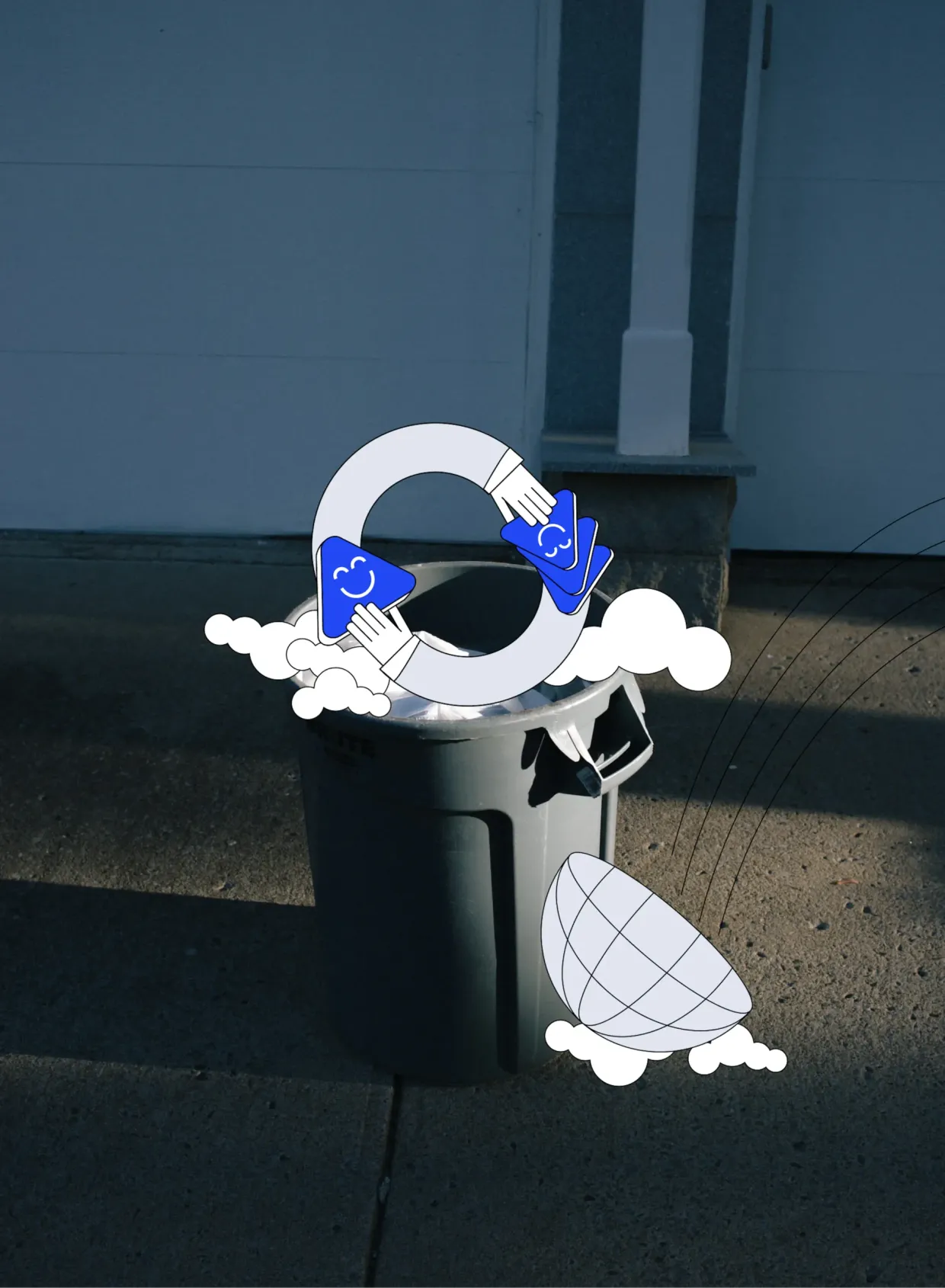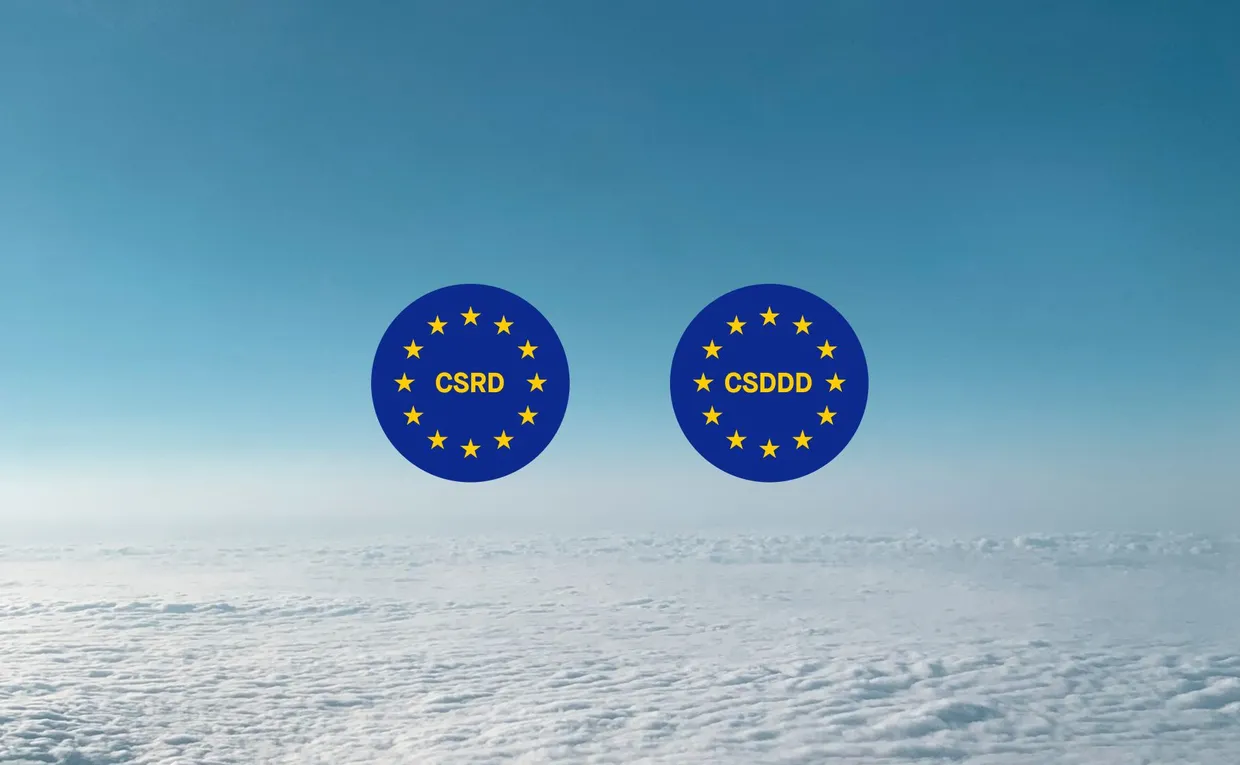Households throw away almost 2 billion tonnes of waste every year. The circular economy could help us clean up this mess.
Why is waste an issue?
We’ve all seen the gruesome pictures of turtles choking on plastic. Clearly waste is bad for our planet. But not just because animals are suffering. It’s also complicit in global warming. The issue is threefold.
Our economic activity creates greenhouse gases.
That’s a problem. And it’s worse when we produce things that don’t get used, because that means those emissions are in vain. It’s estimated, for example, that 30% of food bought in the UK is thrown away. That’s a lot of pointless emissions.
Waste itself adds emissions, too.
About 70% of all solid municipal waste is dumped in the open or in landfills, where it decomposes and releases greenhouse gases. Or it gets burnt, which releases greenhouse gases, too.
Waste reduces our ecosystems’ capacity to remove emissions.
Our ecosystems are important carbon sinks, absorbing greenhouse gases from the atmosphere. Waste in the wild messes with these natural systems and reduces their ability to regenerate and absorb carbon.
Add to this an ever-growing global population and increasing incomes, and you can see how things will only get worse if we don’t act.
What can we do?
The circular economy is a way to fix this.
A linear process has a beginning and an end, where materials are harvested, processed, used and then dumped. A circular process, on the other hand, keeps our stuff in a “cycle”. Raw materials are sourced as sustainably as possible, and everything is re-used or recycled instead of thrown away.
1. Designed to last
Products are made to be used for as long as possible, delaying the moment when we throw them away, and designed to be repaired and maintained easily.
2. Re-purposed and recycled
When a product reaches the end of its life, it is re-used, upcycled or recycled.
3. Sourced sustainably
When we do have to source new raw material, it is chosen for its low environmental footprint and renewability.
The circular economy can be applied to pretty much any sector. But it does require a collaborative effort. Companies need to transform their products – and even their business models – and consumers and governments need to support them.
Who is leading the charge?
There are more and more startups dedicated to removing packaging or encouraging reuse, recycling, and repurposing. Danish company Too Good To Go is one of them. Its app allows you to to buy unsold food from restaurants or supermarkets that would otherwise have been thrown away.
But the big players are getting on board too and starting to rethink their business models. Here are just a handful of trailblazers:
-
IKEA has pledged to use renewable or recycled materials for all its products and packaging by 2030, as well as reducing waste by 25% and pushing for a 100% recycling rate for its products.
-
Adidas has been investing in new design and manufacturing processes that focus on just a few materials that could be used and re-used in perpetuity. The commercial launch is expected for 2021.
-
H&M has started to shift towards more sustainable practices, by helping their customers maintain and fix clothes so they can keep them longer, and using recycled materials for clothing and packaging.
-
Danone has been investing in new packaging that is recyclable. Even better, it’s been working on initiatives such as training schemes that ensure that the recycling won’t just work in theory, but will happen in the real world, too.
-
Dell has been pioneering the circular economy within the tech industry, by collecting old products and reusing plastics and precious metals to build new ones. They also pledge to select more sustainable materials in their new products.
Ready to get circular?
To read more and find out how your business can adopt a circular approach, the Ellen MacArthur Foundation is a thought leader on the circular economy. It has some great resources and also partners with companies to help them align their business models with the circularity principles.



